Pentzia incana, African Sheepbush
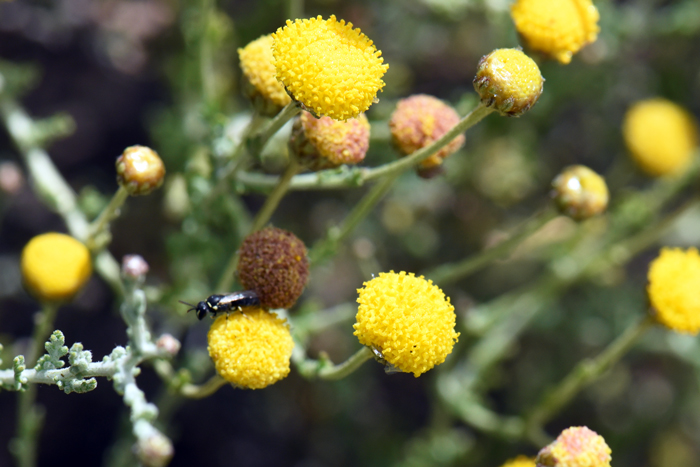
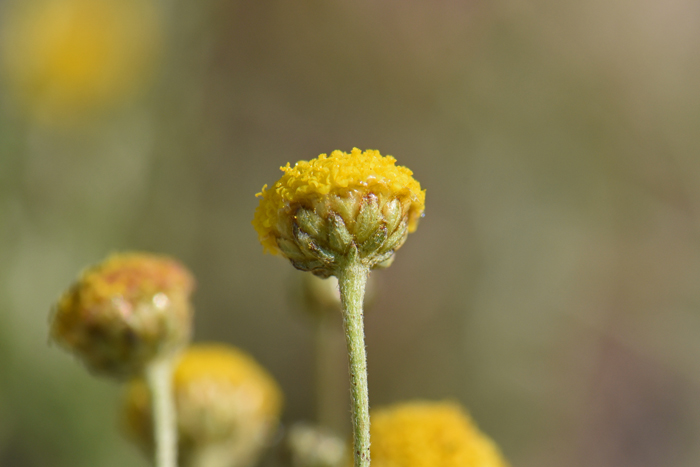
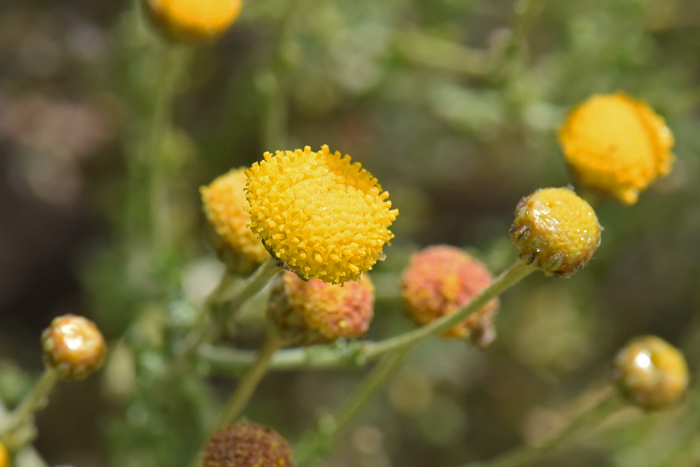
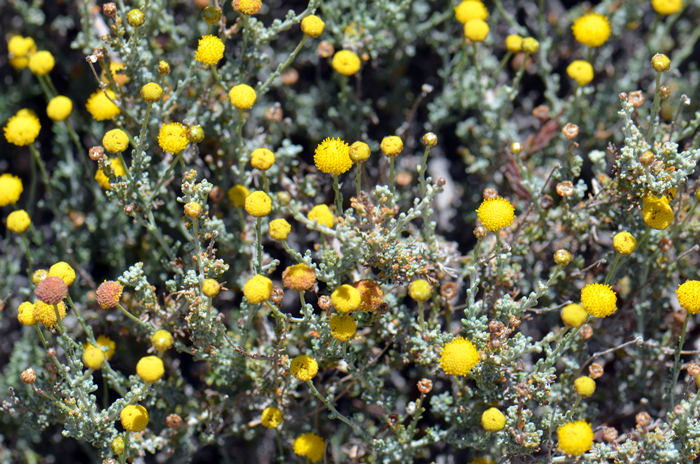
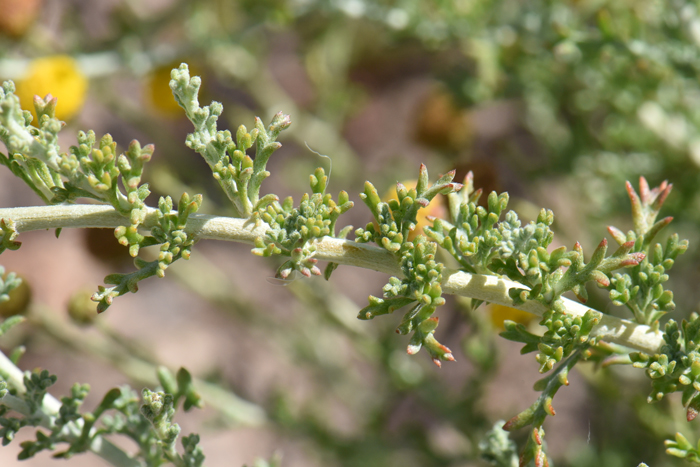
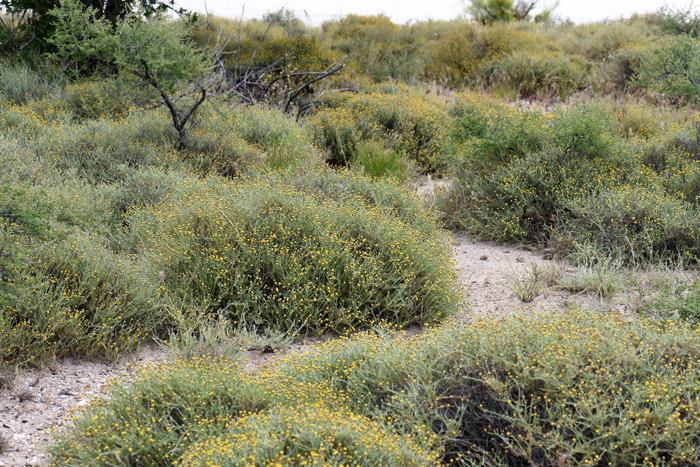
Scientific Name: Pentzia incana
Common Name: African Sheepbush
Also called: Australian Sheepbush, Karoo Bush
Family: Asteraceae, Sunflower Family
Synonyms: (Pentzia virgata)
Status: Introduced
Duration: Perennial
Size: Up to 1 foot (30 cm) or more; 2 feet (61 cm)
Growth Form: Subshrub; dense bushy plants rounded over; covered with short, soft grey matted woolly hairs (tomentose); horizontal fibrous stems produce roots at ground level, then turn upright to erect.
Leaves: Green; small leaves fascicled or in bundles similar to pine needles; divided pinnately with linear lobes and minute glands.
Flower Color: Yellow; flower heads small (.5 inch - 1.3 cm) ball-like; solitary heads on tips of long flowering stalks; bracts surrounding flower heads blunt or rounded at the tip; fruit is a cypsela.
Flowering Season: April to September
Elevation: 3,000 to 5,500 feet (914-1,676 m)
Habitat Preferences: Chaparral vegetation, pinyon-juniper and oak woodland, sandy or loamy soils.
Recorded Range: In the United States African Sheepbush is found in Arizona and New Mexico. In Arizona it has been recorded or observed in Pinal and Graham Counties and will likely be identified in Gila County.
North America & US County Distribution Map for Pentzia incana.
North America species range map for African Sheepbush, Pentzia incana:
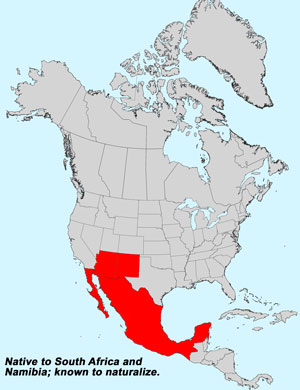
U.S. Weed Information: Unknown
Invasive/Noxious Weed Information: Unknown
Wetland Indicator: Unknown
Threatened/Endangered Information: Unknown
Genus Information: In North America there are 3 species and 3 accepted taxa overall for the genus Pentzia. Worldwide, The Plant List includes 21 accepted species names for Pentzia.
The genus Pentzia was named for Swedish plant collector Hendrik Christian Pentz, 1738–1803.
Many species previously included in the genus Pentzia have been re-classified to other genera including the Arizona invasive genera Oncosiphon.
In the Southwestern United States there is 1 species of Pentzia in Arizona and New Mexico. Data approximate and subject to revision.
Comments: African Sheepbush is an aromatic rounded subshrub with arching branching that set root in sandy soil. The photo above was taken near Oak Flats northeast of Superior in Pinal County.
This African/Australian plant has moderate forage value and was introduced in Arizona near Safford, by the U.S. Soil Conservation Service. It does not appear to be an aggressive species.
In Southwest Desert Flora also see the similar looking and closely related invasive Stinknet, Oncosiphon piluliferum.
The species epithet “incana” (inca'na:) means grayish or hoary (tomentose).

